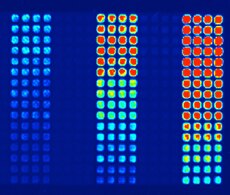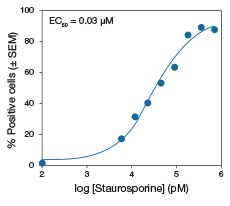Microplate Assays for Caspase Activity
‹ Fluorescence Microplate Assays
- Microplate Assays for Caspase Activity
- Microplate Assays for Cell Proliferation
- Microplate Assays for Cell Signaling and Lipids
- Microplate Assays for Cell Viability
- Microplate Assays for Enzyme Activity
- Microplate Assays for β-Galactosidase Activity
- Microplate Assays Using Ion Indicators
- Microplate Assays Using Metabolites and Analytes
- Microplate Assays for Nucleic Acids
- Microplate Assays for Protein Quantitation
- Microplate Assays for Reactive Oxygen Species

A distinctive feature of the early stages of apoptosis is the activation of caspase enzymes, which participate in the cleavage of protein substrates and in the subsequent disassembly of the cell. We offer a series of caspase assays that allow the simple detection of active caspases in living cells in real time or in cellular lysates or extracts.
- Explore our portfolio of easy-to-learn, easy-to-use plate readers
- Also see imaging assays for caspase activity
- Also see flow cytometry assays for caspase activity
Live-cell assays
CellEvent Caspase-3/7 Green Detection Reagent is optimized for apoptosis analysis with a simple no-wash protocol that helps preserve delicate apoptotic cells. Live cells in microplate wells can be monitored in real time for apoptotic activity by measuring fluorescence intensity.
Caspase-3/7 assays
Microplate assay kits for caspase-3/7 measurement provide a choice of substrates with different wavelength emissions. Kits are available using rhodamine 110 or AMC to report caspase activity. Substrates are also available as bulk reagents or predispensed into microplate wells

Dose–response curve with CellEvent Caspase-3/7 Green Detection Reagent. The percent positive for active caspase3/7 and EC50 were determined for staurosporine-treated U2OS cells using the reagents in the CellEvent Caspase-3/7 Green Detection Reagent.
